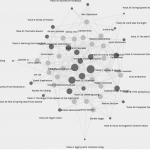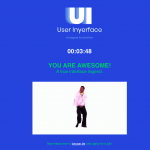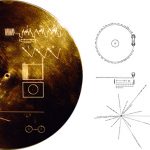Linking Assignment
Link #1 Gary Reimer Voice to Text Task3
Gary used WordPress to create his blog, his interface is simple with a blue background and he has imbedded images into the body of his blog post. For the Voice to Text task Gary created a very interesting story that also was easy to read using a voice to text software he found on the web. His voice to text story has correct punctionation and makes it for a much more enjoyable reading experience than my own voice to text story. The addition of punctuation makes such a world of difference, the software that he used was a much better speech to text program than the one freely available on my iPhone.The technology for voice to text is varied, in my own experience I had absolutely no punctuation and it made the whole story a distaster to read, but as Gary’s story shows there is better tech out there. In my comment on his post I talked about oral story telling culture and how a written story transcribed does not bring all of the other elements, charisma, emphasis, body language etc. that an oral story would do. Similar to my own experience Gary mentions that in his story there are many more connecting words things like and but so or, which might not have been in a written story. I had the same experience with my own voice to text story, using many connecting words that seem out of place when written down. I think voice to text can be an interested tool to use, but I believe oral story telling will always be better, and I think my own brain works better writing rather than speaking my thoughts.
I commented on Gary’s post on the 6th of February and he responded to my comment that very day. However I did not get a notification of his response and so I only read what he said after going through all of my previous comments to create this linking assignment. Having a conversation is not very possible through the medium of the WordPress site.
Link #2 Anne Emberline Manual Scripts and Potato Printing Task4
Anne uses WordPress for her blog as well however she has a more professional site and her course work for other courses is also available on her site. Her interface is clean simple and she uses many images throughout her blog post to make her ideas come to life. I posted a comment to her post on the 11th of February (7 days after her initial post) and she did not reply. However she has commented on my own blog posts since that time. Again the conversational aspect of posting comments to a blog is lacking. For this task, like me, Anne chose to comment both on the act of handwriting and creation of a potato stamp. Her experience of handwriting was interesting, she is an active journaler but has transitioned to digital journaling. She reflected on the changes she has made from paper journals to digital ones and how those mirror the changes in the world from a more analogue to a more digital basis. She went on to show us her very well-organized filling system by which she catalogues all of her journal entries. I found the idea of having such a vast bank of personal knowledge and memories amazing and somewhat daunting. She also created a potato stamp and found, like me, that it was a more difficult task than first thought. She is a designer and so I think there was some frustration in not being able to create a really intricate font in her potato design. She made the common error of not flipping the letters and her first attempt came out backwards. Something that I admit I almost did myself. She also showed off her design skills by giving us a sample of fonts for the same word she chose. I found Anne’s posts to be inspiring throughout this course and I admire her ability to write in a way that is easy to follow and says a lot about her and her journey through the ETEC courses. It must be in part due to her frequent journaling, the ability to put your thoughts down in text takes practice and she is a master of that art.
Link #3 Allison Johnson An emoji Story Task6
Like the two previous links and my own blog Allison also chose to use the WordPress site as the platform for her blog. Her interface is very minimal and clean and I believe she used mostly the pre-set layout options (I know this because I did swell and my blog looks quite similar to hers). Allison posted her task as a screen shot of a speech bubble which is a very pleasing way of seeing the emoji story challenge presented. Like me she found it difficult to find all of the elements that she was looking for in the emoji keyboard online and ended up using her phone’s built-in emoji keyboard istead. Her description of the Lord of the Rings was extremely clear and easy to decipher, which is similar to the feedback I received from my own emoji challenge with the movie Speed. She also made an interesting remark about cultural bias and the meaning of different emojis in different cultures which was something that I had thought about but not articulated. She rephrases Bolter (2001) by saying that “ we become aware of the fact that our interpretation of image and text can become quite subjective depending on our personal experience.” I feel that this idea goes to the heart of all communication and it is an important part of the human experience. Those of us who belong to more than one culture can attest that there are differences not only in language but expression and attitude that can be interpreted differently depending on you cultural attachment and life experience. Deep thoughts for such a simple task.
Link #4 Adrianna Silverstre Twine Story Task5
Adrianna uses WordPress also, and with many of the same pre-set options for her layout and interface. For this task she created a Twine based on a fictional story that her husband told to their young child. The way in which she used colour to change from one “voice” to another was captivating and the story itself was told with the context of her family life. The Twine was a very interesting read and I enjoyed learning more about her through it. She says that she created cards and used them to help her map out her story idea before going to Twine. I used the Twine directly and allowed the story to take me where it wanted to go on. Her method likely made a much more coherent story with interesting links throughout, while mine very much represented a type of chose your own adventure novel but with a lot of dead ends. She says that she struggled with the platform and that it took her several hours to complete it. While she was happy with the results, I can agree that I found using Twine a steep learning curve. Coding is not easy but it is very pleasing to get the final product and feel that sense of accomplishment. I was the only one to comment on her task and she did not leave a reply to my comment. The design of the course and the use of blogs means that we often have incomplete conversations. Comments are often left hanging without reply. This has not been my experience in other courses where we use the Canvas discussion forum to post our responses and have conversations that everyone is able to easily read and follow along.
Link #5 Selina C. Golden Record Curation Task8
This was one task where I read through a lot of other students’ blogs in order to get a diverse perspective. I found this task personally really challenging on a number of levels. I don’t necessarily agree that the golden record was a great idea or even one that is worth talking about. I also don’t think that sending music to aliens makes any sense whatsoever. It was interesting however to see how everyone went about the task of pairing down the 27 songs to only 10. The rational that many people gave was to create a list that was as diverse as possible. Some students even took a mathematical or geographical approach and counted out one song from each continent. It seemed that the actual music was secondary, and the first priority was to be representative of the whole world. Many students commented that the playlist on the original Golden Record was quite Eurocentric, this was a point brought up by Selina as well. She also shared my opinion that the idea of creating this object was more romantic than practical. In the next assignment we were able to see that although most students stated that they tried to pick songs that were well representative of the whole world, the most commonly chosen song was a rock song from the 50s, which is maybe more closely related to the sort of music we listen to in our real lives. I enjoyed reading through multiple blogs to find out more about the reasons for everyones choices, if this had been done in canvas on a central cite it might have been easier for people to read through multiple posts and get a more wholistic view of the task.
Link#6 Binal Khakharia Attention Economy Task10
Binal used WordPress also and she chose a more traditional layout using a black backdrop and white text. For this task Binal and I both completed the BAGAAR task in under ten minutes. They described the process as frustrating but also make the interesting connection to slowing down and thinking about every click and keystroke. They appreciated that making this extremely hard to navigate interface meant that rather than skim over things and click the most obvious button (as we normally do in life, accept all cookies, continue, yes to anything to get me to the next screen…) you had to read through all of the options in order to move on. They also mention conditioning, wondering if children might be better at this game than adults since they might not be as conditioned as we are to click on the right buttons. They mention that they will be sharing it with their students, and I think that could make for a very interesting conversation with students. I commented about an experience that I had recently with my father who is not very tech savvy. I spent over an hour walking him through each and every click in order to get zoom onto his computer. I found myself saying things like “click the red button on the top left hand of the window to close it” and “Double click, that means click two times fast, on the line that reads Zoom.pkg”. To him the computer in its normal form is a type of BAGAAR frustration screen. Technology has a way of making us realize our complacencies and our limits.
Overall I found that most of my colleagues had similar ideas and experiences with the tasks. It was interesting to read through many different blogs each week and get an idea of what others’ were thinking. The difficulty with this particular way of posting and sharing ideas is that there is no central location to find all of the posts and a communal conversation among many students is almost impossible. It would be interesting to complete these assignment both by posting them to a blog but also by including thoughts on a communal message board where a conversation could take place each week. The blogs create an interesting portfolio for the individual but it does not create the best methods for linking diverse ideas together and having a deep discussion within the community.
Photo by Ishan @seefromthesky on Unsplash






